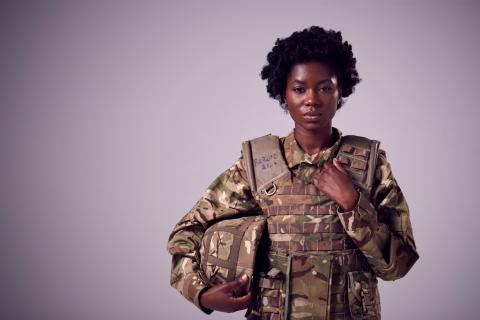
Women are increasingly seen as the right fit for police and military forces around the world but uncomfortable body armour can make work a pain.
Research from Bond University’s Tactical Research Unit reinforces the need for female-specific body armour, just as a new wave of women prepare to enter frontline roles.
The Australian Bureau of Statistics says women made up 20.6 percent of the Australian Defence Force in 2021, up more than 25 percent from six years earlier, and last year the Australian Federal Police announced it was aiming for 30 percent female officers by 2028.
If more and more women are being sought for defence and law enforcement careers, it is necessary to move away from simply providing smaller-sized male designed body armour that doesn’t cater for differences in physique.
The new research, which also involved Bond University Doctor of Physiotherapy students and industry-leading uniform manufacturer Australian Defence Apparel, outlined the problem.
Testing took place using non-gender specific equipment across a range of ‘in-the-field' scenarios including a rapid vehicle exit simulation, a victim drag test and movement screening.
Data showed different sites of bodily discomfort between male and female officers.
Director of the Tactical Research Unit, Dr Robin Orr, said the findings were clear.
“The research found men and women experienced uniform discomfort on different parts of their bodies,” he said.
“Male and female officers both felt discomfort in the neck and shoulder regions, but males found greater discomfort over the stomach.
“Females found greater discomfort over the chest and hips indicating a need for customisation, particularly given relationships with physical movement findings.”
Dr Orr said the test results were eye-opening for several reasons.
"It’s critical that industry not approach uniform fitting on a size-only basis,” he said.
“It is important that female officers are not simply fitted in downsized male equipment, for instance.
“Officers need to ensure that their body armour and load bearing vests are fitted correctly, especially after all equipment has been added to the vests, and in both standing and sitting positions.”
Dr Orr commended industry partner Australian Defences Apparel for its active participation in the research.
“It’s another example of the value of real-time collaboration between academia and industry,” he said.
“We are beginning to see some significant value in having our academic and research staff and students work seamlessly with industry and end users to piece together solutions.”

